Makes and Models
2020 Subaru Forester Hybrid – S Hybrid & XV Hybrid – Private Fleet Car Review.

 This Car Review Is About: Two new Hybrid vehicles for the Australian market, courtesy of Subaru. The Forester is the brand’s best seller, and along with the XV sees the company launch their first forays into the hybrid arena.
This Car Review Is About: Two new Hybrid vehicles for the Australian market, courtesy of Subaru. The Forester is the brand’s best seller, and along with the XV sees the company launch their first forays into the hybrid arena.
Each come with a varying trim range. The Forester Hybrid comes in Forester Hybrid-L and Forester Hybrid-S trim, and is available in four “normal” levels; 2.5i, 2.5i-L, 2.5i Premium, and 2.5i-S. XV is available in XV Hybrid AWD, and 2.0i, 2.0i-L AWD, 2.0i Premium AWD, and 2.0i-S AWD.
How Much Does It Cost? According to the pricing matrix on the Subaru Australia website, the entry Forester is $39,322, Forester 2.5i-L Hybrid starts at $44,731, with the 2.5i-S at $51,031 drive-away. XV kicks off at $33,546 in entry level trim, and $40,239 for the sole XV Hybrid.
Under The Bonnet Is: Where the changes lie. A 2.0L boxer four in the Forester replaces the normally fitted 2.5L The battery is located in the rear. The XV has the same layout, and also comes with a 2.0L petrol engine. The Forester and XV have a 48L tank. That’s down from the normal 63L. There are no changes to the Subaru signature all wheel drive platform otherwise.
 The spec sheet lists the peak power for the Forester and XV Hybrid as 110kW at 6000rpm, and 12.3kW for the electric motor. Torque is rated 196Nm at a typical 4000rpm, and 66Nm for the electric motor.
The spec sheet lists the peak power for the Forester and XV Hybrid as 110kW at 6000rpm, and 12.3kW for the electric motor. Torque is rated 196Nm at a typical 4000rpm, and 66Nm for the electric motor.
Economy for the Forester Hybrid, says Subaru, is 6.7L/100km combined, 7.5L for the urban, and 6.2L for the highway. For the Forester, we finished on 7.7L/100km. This was on a drive loop of 80% urban and a hilly backroads remaining 20%. XV Hybrid is rated as 6.5L/100km for the combined, 7.5L for the urban, 5.9L/100km for the highway and also finished on 7.7L/100km. Required fuel is 91RON. Both are heavier than their non-hybrid siblings, with the Forester at 1,603kg dry and XV at 1,536kg. Both are around 90kg heavier thanks to the battery pack. Transmission is a seven step CVT in both with manual mode. Torque vectoring is standard as well.
Transmission is a seven step CVT in both with manual mode. Torque vectoring is standard as well.
On The Outside It’s: Moreso a badge denoting the hybrids drive-train with E-Boxer than any wholesale changes since the cars were facelifted two years ago. Forester is much like the Outback. Both look like station wagons yet are SUV sized. Forester is 4,605mm in length, and stands an impressive 1,730mm to provide that SUV presence. It’s clever design work from Subaru in this area as compared to other brands, it simply doesn’t look like an SUV. The XV is 4,465mm, and is actually a little lower than the non-hybrid XV, standing 1,595mm, 20mm down on the roof-rail fitted non-hybrids. The XV is more a hunchbacked style visually though, thanks to the extra ride height it has over the Impreza hatch it’s based on. Ground clearance for both is 220mm.
Forester is much like the Outback. Both look like station wagons yet are SUV sized. Forester is 4,605mm in length, and stands an impressive 1,730mm to provide that SUV presence. It’s clever design work from Subaru in this area as compared to other brands, it simply doesn’t look like an SUV. The XV is 4,465mm, and is actually a little lower than the non-hybrid XV, standing 1,595mm, 20mm down on the roof-rail fitted non-hybrids. The XV is more a hunchbacked style visually though, thanks to the extra ride height it has over the Impreza hatch it’s based on. Ground clearance for both is 220mm.  Wheelbases are almost identical, with a mere 5mm separating the pair at 2,670mm and 2,665mm respectively. Wheel and rubber combos for the two tested were 225/55/18s on the Forester S Hybrid with Bridgestone supplying the rubber. The XV has Yokohamas and 225/60/17s. There are eight paint colours for the Forester, including the deep aqua blue on the Forester Hybrid and a shade of aquamarine on the XV. It was a colour remarked upon by many as being a lovely colour.
Wheelbases are almost identical, with a mere 5mm separating the pair at 2,670mm and 2,665mm respectively. Wheel and rubber combos for the two tested were 225/55/18s on the Forester S Hybrid with Bridgestone supplying the rubber. The XV has Yokohamas and 225/60/17s. There are eight paint colours for the Forester, including the deep aqua blue on the Forester Hybrid and a shade of aquamarine on the XV. It was a colour remarked upon by many as being a lovely colour. The C shaped LED lights in the front and rear clusters bring a model and brand defining look, as it’s common across the range Subaru offer. The Forester has self leveling front lights and they’re steering sensitive. The XV doesn’t get these features in Hybrid trim.
The C shaped LED lights in the front and rear clusters bring a model and brand defining look, as it’s common across the range Subaru offer. The Forester has self leveling front lights and they’re steering sensitive. The XV doesn’t get these features in Hybrid trim.
On The Inside It’s: Definably Subaru. There are the three screens, one in the dash binnacle, the touchscreen in the centre (smaller in the XV at 6.5 inches against the 8.0 screen in Forester S Hybrid), and the very useful info screen perched up high. Audio is DAB enabled however none of the information normally available such as artist and song could be accessed. The Forester had a Harman-Kardon supplied speaker system. There is also a CD player in each.
External views though, as part of the safety system, can also be accessed here, such as the left hand side when reversing and showing in crystal clear clarity the angle of the car in relation to the kerb.  The steering wheel has a pair of tabs on the lower left arc, at around the seven o-clock position, and a flick back or forth is what changes the information on the dash display. The Info button on the spoke changes the info on the upper screen, and includes angles of incline, economy, and drive distribution when underway. Centre console rocker switches for the front seat heating sit close to the X-Drive control knob (chromed in the Forester, a tab in the XV) and they warm the seats quickly in the Forester. The XV has leather appointed cloth sports style seats and no heating is fitted here.
The steering wheel has a pair of tabs on the lower left arc, at around the seven o-clock position, and a flick back or forth is what changes the information on the dash display. The Info button on the spoke changes the info on the upper screen, and includes angles of incline, economy, and drive distribution when underway. Centre console rocker switches for the front seat heating sit close to the X-Drive control knob (chromed in the Forester, a tab in the XV) and they warm the seats quickly in the Forester. The XV has leather appointed cloth sports style seats and no heating is fitted here.
The driver’s seat is powered and has memory positioning. Leather trim is found on the Forester’s seats, cloth for the XV Hybrid. Cargo room is 509L to 1,779L in the Forester, 345L to 919L in the XV, showcasing the differing rear roof lines plus the higher cargo floor in the XV.

The dash design is classy bar one small niggle. The USB ports up front and well and truly buried in a niche that requires unnecessary fiddling to access. There’s some crouching down required in order to first sight the ports then actually insert cables. Ancillary controls for the driver are smartly laid out and visible above the driver’s right knee. There are a couple of acronyms in the pair; SRH is Steering Responsive Headlights and AVH is Auto Vehicle Hold, the braking mechanism on slopes. What About Safety?: From the Subaru website: Subaru’s Vision Assist technology featuring: Front View Monitor, Rear Cross Traffic Alert, Reverse Automatic Braking, Side View Monitor. There is also the Driver Monitoring System – Driver Focus3 featuring distraction and drowsiness warning. There is an icon on the driver’s dash display and warning tones aplenty of it reads the face and feels the eyes haven’t been looking forward. airbags are seven in number.
What About Safety?: From the Subaru website: Subaru’s Vision Assist technology featuring: Front View Monitor, Rear Cross Traffic Alert, Reverse Automatic Braking, Side View Monitor. There is also the Driver Monitoring System – Driver Focus3 featuring distraction and drowsiness warning. There is an icon on the driver’s dash display and warning tones aplenty of it reads the face and feels the eyes haven’t been looking forward. airbags are seven in number.
 On The Road It’s: Surprising in a couple of ways. In the case of the hybrid system in the Toyota range, the cars start in a fully electric ready to go mode. The cars then will reach 20kph before the petrol engine switches in. In the case of the Forester and XV, the petrol engine is rotating from the get-go. Select Drive, gently squeeze the go pedal, and there’s plenty of urge as both battery and petrol get the cars underway.
On The Road It’s: Surprising in a couple of ways. In the case of the hybrid system in the Toyota range, the cars start in a fully electric ready to go mode. The cars then will reach 20kph before the petrol engine switches in. In the case of the Forester and XV, the petrol engine is rotating from the get-go. Select Drive, gently squeeze the go pedal, and there’s plenty of urge as both battery and petrol get the cars underway.
 There is an EV icon in the driver’s display area, and this appears moreso when the cars are cruising on the highway, and the petrol engine is barely ticking over. There’s a fair bit of engine noise when really pushing it, such as going up hills, and this was where the Forester really suffered in economy. That smaller tank didn’t help as just after 260 kilometres covered the gauge said it was half empty. The XV had more kilometres on the petrol engine and felt noticeably perkier, looser, more spritely.
There is an EV icon in the driver’s display area, and this appears moreso when the cars are cruising on the highway, and the petrol engine is barely ticking over. There’s a fair bit of engine noise when really pushing it, such as going up hills, and this was where the Forester really suffered in economy. That smaller tank didn’t help as just after 260 kilometres covered the gauge said it was half empty. The XV had more kilometres on the petrol engine and felt noticeably perkier, looser, more spritely.
Certain sections of the acceleration curve felt more linear, less stressed than the Forester. However, no matter what, compared to the system in Toyota’s range, the petrol engines here felt more “always on”, and engage the EV system far less than Toyota’s. The Toyota setup is definitely EV up to 20kph, the Subaru setup says it should but doesn’t. Even on very light throttle pressing on the highway, the petrol engine is still engaged.
Also, the CVT isn’t bad, but there’s still that sense of energy sapping depending on how the throttle is used. Under hard acceleration there’s that constant sense of slipping however more a snese of gears changing. Lighter throttle pressing seems to have better response and more a traditional CVT feel with revs rising and motion increasing. The attached image shows Subaru’s intent. In real terms the engine package is the only difference in how they drive. The brakes have a slightly more responsive feel, the steering is quick and light to the touch, and there is little to quibble about in regards to the roadholding abilities. With the all wheel drive grip levels and torque vectoring facility, both cars can be pushed into turns and corners with plenty of confidence. On longer sweeping corners there is a distinct lack of need to constantly adjust the steering as well.
The attached image shows Subaru’s intent. In real terms the engine package is the only difference in how they drive. The brakes have a slightly more responsive feel, the steering is quick and light to the touch, and there is little to quibble about in regards to the roadholding abilities. With the all wheel drive grip levels and torque vectoring facility, both cars can be pushed into turns and corners with plenty of confidence. On longer sweeping corners there is a distinct lack of need to constantly adjust the steering as well.
What About Safety?: Both cars have a five star rating. Both have Subaru’s much vaunted Eyesight safety system. There is a Driver Monitoring System that literally watches the driver’s face. There is facial recognition and looks for drowsiness and distraction cues. Blind Spot Monitor, Rear Cross Traffic, Reverse Braking for when sensors pick up an object in a reversal path, Forward Collision Warning (which can be a bit overly sensitive), and seven airbags round out a very solid package.
What About Warranty And Service?: Like most hybrid makers, it’s a little mixed. The main range comes with a 5 Years/Unlimited kilometres warranty period, with the Subaru New Vehicle Warranty period on high-voltage batteries for Subaru Hybrid vehicles is 8 years/160,000 kilometres, whichever comes first. It seems unlikely that drivers would do less than 160,000 over eight years.
Servicing costs for the hybrids are the same. The first checkup after one month is free, with the Forester S Hybrid and XV Hybrid on a 12 month or 12,500 kilometre cycle. The first service cost $350.25, followed by B’ Service 24 months or 25,000kms at $588.31, and then the ‘C’ Service 36 months or 37,500kms is $354.83. The final two are ‘D’ Service, 48 months or 50,000kms, $784.77 and ‘E’ Service 60 months or 62,500kms at $354.86.
At The End Of The Drive. It’s mixed feelings. Given Subaru’s own fuel consumption figures, and that we recently got 5.0L/100km from a Camry Hybrid, loaded with four adults, some baggae, and a mid sized pooch, they fall short of expectations. They’re not big cars, they’ve been driven in urban areas, yes, but with one aboard for pretty much most of the drive cycles. There is no question about the rest of the package, with the interiors largely up to the very high standard seen in Subaru vehicles, and the technology seen for some years now. But in a hybrid sense? More work to be done, we suspect. Pick your Subaru here.
Jeep Helps Farmers Across Borders.
Jeep Australia is supporting Farmers Across Borders right now, leading a convoy of road trains from Esperance to Meekatharra to deliver much needed hay to drought-affected farmers.
Twenty road trains loaded with donated fodder departed from the Esperance Shire recently and made an overnight pit-stop in Leonora before reaching their destination, Meekatharra, on Australia Day.
“We’re excited to be delivering fodder to farmers in Meekatharra and surrounding towns this Australia Day,” said Ms Sam Starcevich, co-founder of Farmers Across Borders.
“West Australian farmers continue to face some of the most challenging conditions we’ve ever seen, and our support is needed now more than ever before.”
Jeep Australia will once again fuel the volunteers throughout their journey, providing breakfast and dinner over the 1000 kilometres travelled. Jeep will also provide a fleet of Jeep support vehicles for the Farmers Across Borders team to travel in, as they did for the 2019 run.
“Farmers Across Borders is an incredible cause and Jeep Australia is proud to support the team’s efforts as they give back to the Aussie farmers who so desperately need our help,” said Managing Director and CEO of Jeep Australia, Kevin Flynn.
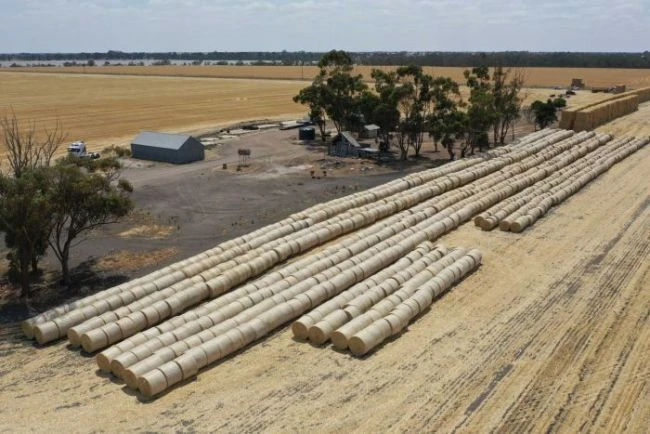
On average, a road train will need approximately $10,000 of fuel to make the trip, and Farmers Across Borders still need help to fund fuel costs. To donate or find out more information about Farmers Across Borders, please visit the Jeep “Farmers Across Borders” website.
These complement the Burrumbuttock Hay Runners drive at the same time, with 200 trucks full of hay and straw heading to the Armidale region in NSW. Around 10 trucks left Horsham in Victoria on the Thursday morning before the Australia Day weekend, meeting with another convoy of about 30 trucks at St Arnaud, also in the Wimmera, before going onto Burrumbuttock in the NSW Riverina.
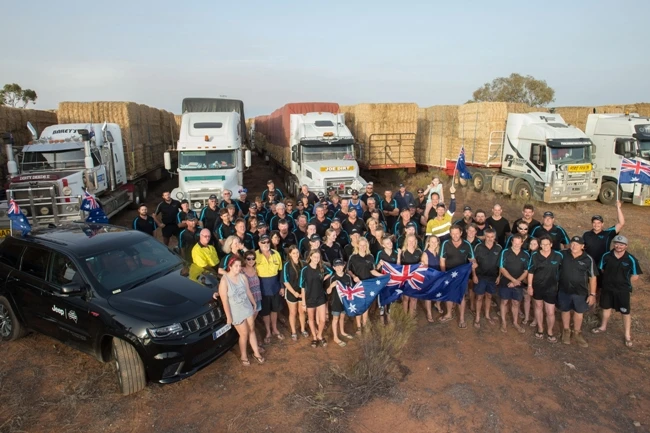
Most of the hay will be headed for Armidale, while some will go to farmers affected by bushfires. Mr Sam McGennisken, who had allocated part of his farm as a staging area for the trucks, said he was looking forward to meeting NSW farmers. “It’s just what the farming community is all about; we are more than happy to help out,” he said. “This hay will go straight to the farms and to feeding stock.”
Farmers Across Borders itself is a not-for-profit organisation started by two farmers in Western Australia. Farmers Across Borders help drought affected farmers by delivering donated hay from Western Australia to areas in New South Wales. Farmers Across Borders work with Lions – Need for Feed to provide hay and gather financial donations to facilitate the journey. To read more about Farmers Across Borders and how you can support visit the Farmers Across Borders website
Montery's Auto Week: McCall's Motorworks Revival.
Monterey, California. It’s located slap bang in the middle of the state’s coastline and once a year plays host to a number of car shows. Those two words, however, do not do justice to what is made available as there are events such as the fabled Pebble Beach Concours d’Elegance to attend in a must-see automotive week.
The McCall’s Motorworks Revival on August 14 is the ignition point for the week and for 2019 will be held once again at the Monterey Jet Center. It’s an ideal location as it allows the organisers the opportunity to take advantage of the open spaces, combine aircraft, luxury and sports cars, high end personal luxury items, and more.
Of note for the 2019 event will be the attendance of world renowned performance car company, Roush. They’ll be showcasing their one-of-a-kind Stage 3 Mustang and a powerplant producing 710 horsepower. It’ll sit by the side of their new F-150 SC pickup. Power here is from a supercharged 650 horsepower 5.0L V8.
High end watch maker, Chronoswiss, will be there and they’ll be unveiling their startling Flying Grand Open Gear ReSec. Limited to just 50 pieces this beautiful and stylish timepiece embodies true Swiss watchmaking.

Along with the airport’s modern and historic aircraft displays, historic motorsport cars will appeal to those with more than a hint of gasoline in the blood. This year will see the BMW 320 Turbo race car, as campaigned by Jim Busby in the International Motor Sports Association competition. This car is just one of only two of its type built in 1978. It’s been raced at Silverstone, the Nurburgring, and competed with Jim behind the wheel in the 1979 IMSA GTX series. There will also be a LeMans winning Porsche at this year’s event in the shape of a GT3 RSR. Porsche have a long history with that famous race and this car is sure to have plenty of eyes on her.
Cessna is a name familiar around the world to anyone with even a passing interest in aviation. McCall Events are delighted to have this year’s Motorworks Revival Cessna’s new Citation Longitude. This sleek business jet is powered by a pair of Honeywell HTF7000 turbofan engines, has the quietest interior in its class, and can be configured to seat up to 12 passengers.

Attendees can taste high end fare, such as the gourmet caviar options from the California Caviar Company, or down a finger of tequila from El Jefe Tequila., whilst admiring Lamborghinis, McLarens new and historic, Gulfstreams, Pilatus aircraft, and perhaps even a James Bond Aston Martin DB5 or the original, prototype, Ford Mustang.
This year marks the 28th McCall’s Motorworks Revival. At its core is Gordon McCall, a man with plenty of events and concours experience. Gordon has over a quarter century of judging experience at Pebble Beach, and is the co-founder & motorsports director for “The Quail: A Motorsports Gathering”.
Tickets for the event go on sale the year before, shortly after the previous event, and are highly prized amongst regular attendees.
Shelby Outmuscles Dodge
The Ford Mustang Shelby GT 500 has been released, and if you’ve wanted the Superman like ability to change the earth’s rotation, this is the one for you. A handbuilt 5.2L V8, complete with super-strong forged conrods, a new water to air intercooled system that works alongside the supercharger, and appropriate electronic modifications, have laid out a powerful 566kW of grunt and an astonishing 866Nm of torque. This the end result of Ford’s quest to overcome the brilliant 527kW Dodge Hellcat. Sadly, it does look as if it won’t be available in right-hand drive.
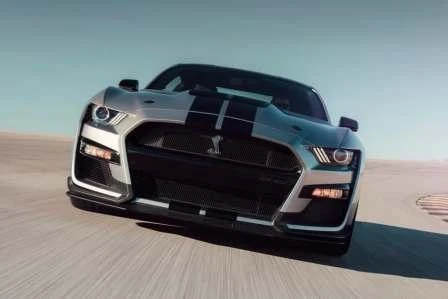
This monster gets its oomph to the rear wheels via a dual-clutch seven speed. Changes are slow (cough) at 100 milliseconds. Reflecting what Ford believe will be the main focus of the owners, three drive modes, Road, Track, and Dragstrip. All together, the upgraded engine, transmission, and electronics should see a 0-100 time of under three seconds, a figure Ford hasn’t yet confirmed. It tops out at 290kmh, and for those using the Dragstrip mode, a quarter mile of around eleven seconds should be expected. A line-lock system for drag use is included.
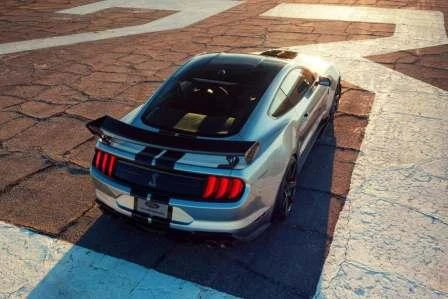
In order to tame the firebreathing machine, active damper suspension is onboard, with rerated coil springs and a redesigned geometry for the suspension components. Michelin Pilot Sport 4S rubber provide the fight in the grip section and wrap around Australian made carbon-fibre 20 inch wheels, and Brembo adds in the six pot stoppers. A new front splitter is fitted and the ends have a canard design for more aero flow. Outback is a GT4 wing that loads up a near quarter-tonne of downforce at speed. Need to lose weight? the rear bench seat is a delete option.
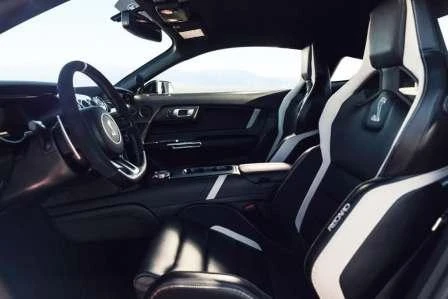
The interior isn’t forgotten, with a full digital instrument panel, 12 speaker sound, 8.0 inch touchscreen, and Recaro buckets with race harness fittings.
If you’ve the money and the right contacts, have a chat with Ford but make it quick. Cars like this tend to sell out in a blink.

